- Home
- Stephen Baxter
The Science of Avatar Page 3
The Science of Avatar Read online
Page 3
But even as Duke was having his astonishing adventure, President Nixon’s administration was making the decision to can the later moon flights. For the foreseeable future American human spaceflight would be restricted to just the low-orbit hops of the space shuttle. It might have been very different: building on the successes of Apollo, Americans might already have reached Mars. But they didn’t.
Forty years later it’s easy to forget that human beings walked on the moon at all. And it’s easy to forget that the Apollo astronauts didn’t just go there “in peace for all mankind,” as the plaque on Apollo 11’s lunar lander said, or just for the science, or even just for national prestige. Just like RDA on Pandora, they went there in search of resources.
And today, would-be prospectors of the sky are again looking out at the solar system with calculating glints in their eyes.
Before 1969 the exploration and colonisation of the solar system, beginning with the moon and working outwards to Mars and beyond, was pretty much a given. In a favourite novel of my boyhood, Leigh Brackett’s Alpha Centauri—Or Die! (1963), this is nicely summed up in a few lines (Chapter IV): “There are men in space again… [The message] was heard and repeated. Inward from Mars it travelled, across Earth and Venus and into the sun-bitten, frost-wracked valleys of Mercury. Outward from Mars it travelled, to the lunar colonies of Jupiter and Saturn, to the nighted mining camps of the worlds beyond…”
Our view of the solar system then, going back centuries to the pioneering telescopic observations of Galileo, was that it was a family of worlds, most if not all of which would host life. Why shouldn’t there be life? Earth is just another planet; if life is here it ought to be everywhere.
And, following old theories of the formation of the planets, it was thought that the further out your world was from the sun, the older it would be. So “young” Venus, blanketed in cloud, was thought to be a world of ocean and swamp, the seas fizzing like soda pop from excess carbon dioxide, the land probably dominated by dinosaur-like monsters. And Mars, further out from the Earth, must be older than Earth, and host to an advanced, ageing civilisation—and, being older, Mars must be drying out. Around 1900, astronomer Percival Lowell put these ideas together with tentative, blurred telescopic observations of Mars to construct one of the most beautiful (if most wrong) theories in the history of science. Lowell believed the Martians were working together on a planetary scale to fix their own climate change crisis, their own ecocide; they had built a global network of canals to use polar cap meltwater to irrigate the drying fields. Lowell believed he saw these canals through his telescope.
This was the Mars that inspired some of the greatest works of early science fiction, including H. G. Wells’ The War of the Worlds (1897), in which the Martians reverse the Avatar story and come to our world for its resources—including human blood!—and Edgar Rice Burroughs’ “Barsoom” novels, beginning with A Princess of Mars, serialised from 1912. In Burroughs’ books “John Carter, gentleman of Virginia” is transported to a Mars of warring tribes and exotic multilegged beasts, and finds a beautiful humanoid girl to fall in love with, “Dejah Thoris, Princess of Helium.” James Cameron says that his absorption in science fiction of all kinds over thirty years fed into the creative process behind Avatar, and he was specifically inspired by Barsoom, and the adventures of John Carter, a soldier on Mars.
Burroughs allowed for Mars’ low gravity, by the way. Like the Na’vi, some of his Martians are taller than humans—“fifteen feet tall.” And on Barsoom there are immense life-sustaining machines of the kind I speculated in Chapter 2 must support a post-ecocide Earth: “Every red Martian is taught during earliest childhood the principles of the manufacture of atmosphere…”
This, anyhow, was the solar system, bursting with life and ripe for colonisation, that shaped the expectations of the early space explorers. So it was quite a shock when the first unmanned spacecraft sailed past Mars in 1964, over an area where “canals” were expected to be seen (even though it was no longer thought they would be artificial)—only to find craters, like the desolate moon.
And then there was the moon itself. It might be lifeless but, before the Apollo missions, space visionaries believed that the apparently barren moon would harbour hidden riches for future human colonists—especially water. As late as 1968, Arthur C. Clarke, in The Promise of Space, wrote, “The most valuable substance of all—as it is on Earth, when in short supply—would be water… [Water] certainly exists on the moon; the question is where, and in what form.” But Apollo brought a grave disappointment. Analysis of the moon rocks seemed to show not the slightest trace of water, either now or in the past. The dark lunar “seas” proved to be made of basaltic dust, not organic sea-bottom scum. To many, even inside the space programme, Apollo, intended as a first step into the cosmos, in the end served only to prove that we cannot colonise space.
So the space planners turned away from the old dreams. Moonwalkers like Charles Duke were suddenly left stranded. And if you wanted to write science fiction about Barsooms and other inhabited worlds, you had better set them among the stars, like Avatar.
But maybe we jumped to conclusions. Since Apollo we have come to suspect that the sky is after all full of riches, even the much-maligned moon. But to reach them, we’ll first have to get off the Earth.
5
A RIDE ON A VALKYRIE
It has always been difficult to make the first step off Earth and into space.
It’s easy on the moon, with its one-sixth gravity. Charlie Duke and his colleague aboard their tiny Apollo lunar module were able to return to lunar orbit with an engine and fuel tanks you could have fitted in a camper truck. By comparison, to climb out of Earth’s gravity well, the space shuttle stack was over fifty metres tall and weighed around two thousand tonnes, most of which was fuel, and oxidiser to burn that fuel. If Earth’s gravity was just a little stronger, in fact, no chemical-fuel rocket system like the shuttle would be able to escape from Earth. And if not for the pressure of military requirements which drove the development of rocketry, we might never have reached space at all; the first astronauts and cosmonauts rode into orbit on converted ballistic missiles.
The space shuttle worked, flying for three decades, despite the design flaws that led to two terrible accidents. But now the programme has been cancelled. And in February 2010 President Obama also dropped funding for NASA’s follow-up “Constellation” programme, which would have replaced the shuttle with a new range of human-rated rockets and spacecraft. The hope is that private industry will step up to the plate with a replacement launch system. Obama’s intention is evidently that the money freed up by not having NASA develop its own vehicles will help prime the pump for a new age of access to space. But for now it looks as if U.S. astronauts will have to hitch rides to orbit on Russian rockets.
Space is an expensive business, however, especially as a start-up. There’s a saying in the business that you need to spend billions to make millions out of space. But there are individuals with such means, and a drive, it seems, to make childhood ambitions come true. Companies like SpaceX and Blue Origin are rushing to develop their own launch systems capable of taking humans safely to orbit. NASA would be a customer, as would companies like Virgin Galactic, with its plans to take passengers on hops into space. SpaceX was established by South African dotcom entrepreneur Elon Musk, one of the creators of Paypal, and Blue Origin was founded by Jeff Bezos, the president of Amazon. This is new money being leveraged to achieve old dreams.
However, while the money might be new many of the designs are relatively conservative: capsules launched aboard chemical-rocket firecrackers, just like Apollo. Even the space shuttle had bits that were either discarded, like the external fuel tank, or had to be fished out of the ocean and rebuilt, like the solid rocket boosters.
What we need is not another throwaway rocket system. What we need is a true spaceplane. What we need is Avatar’s Transatmospheric Vehicle Valkyrie.
The space shuttle was b
oosted by rockets to orbit, but then could only glide back to Earth, unpowered. A true spaceplane would be capable of taking off unaided from a runway like a conventional aircraft, reaching orbit, and then returning to land. (In the industry jargon this is SSTO—single stage to orbit.)
This is an old dream. Before the development of Project Apollo the U.S. Air Force dreamt of spacecraft with wings. It flew the famous X-15 rocket plane, and it funded extensive research into “lifting bodies,” capable of very high-speed flight. Some of this research fed into the space shuttle programme, and today the USAF is experimenting with a scaled-down spaceplane known as the X-37B.
There are technologies on the horizon that could be developed to achieve a true SSTO craft. One promising technology is the “scramjet”: a supersonic combustion ramjet, which would enable aircraft to reach extremely high speeds within the atmosphere. A conventional “ramjet” draws in air to collect oxygen with which to burn its fuel, but the airflow within the engine is subsonic (below the speed of sound), so if the craft itself is travelling faster than sound, the intake of air has to be slowed down, creating drag. But in a scramjet the air passing through the engine can be supersonic—faster than sound, inside the engine itself. This enables the aircraft itself to reach much faster speeds.
The fastest air-breathing aircraft to date is NASA’s X-43A which has reached Mach 9.8 (that is, 9.8 times the speed of sound) using scramjet technology. In theory it is believed that scramjets could reach almost orbital velocity (which is Mach 25). The great advantage is in weight savings; unlike a rocket such as the space shuttle, a scramjet would need to carry virtually no oxidiser to burn its fuel, extracting it all from the air.
This is how the Valkyrie flies. Four times the size of the space shuttle, with its black heat-resistant tiles and white insulation reminiscent of the shuttle’s bodywork, the Valkyrie returns from orbit using friction with the atmosphere to brake, like the shuttle, and glides most of the way home. But to return to orbit it uses air-breathing turbojet engines to get off the ground, and switches to a scramjet mode at three times the speed of sound. It has rocket engines for the final burn to orbit. All this is powered by a fusion engine.
A compromise design with some potential is Skylon, being developed by a company called Reaction Engines Ltd based in Bristol, UK. Skylon’s engine works like a conventional jet up to five times the speed of sound at twenty-six kilometres altitude, at which point the air inlets close and the engine switches to an internal liquid oxygen supply, working as a rocket to complete the climb to orbit. As of February 2009, ESA, the European Space Agency, announced that it was funding a million-euro development of the engines.
Perhaps when the new private spacecraft start flying we will find ourselves on the verge of a new transport boom, like the spread of the railways in the nineteenth century. Aside from access to orbit, spaceplanes could be used for suborbital hops, such as a two-hour flight from New York to Sydney.
And, I suppose, other applications could be military, as we see in Avatar. Valkyrie-class vehicles acting like sub-orbital C-130s could deliver troops and materiel to combat zones anywhere in the world within hours.
But even if we do start getting into space at some reasonable price—so what? If you’re a budding space prospector, a proto-RDA, what are you supposed to be mining, the vacuum? As we’ve seen, in the wake of the Apollo missions scientists believed that even the closest destination, the moon, entirely lacked the most basic resource, water.
It turns out, though, that they might have been too hasty. And beyond the moon, the sky seems to be full of riches.
6
FOLLOW THE WATER
After Apollo, the space scientists examining the returned moon rocks thought that they contained no trace of water. They concluded that the moon must be dryer than old bones (literally).
But this conclusion has long been questioned. It could be that any evidence of water those early researchers did see was dismissed because of fears of contamination from Earth’s atmosphere; none of the boxes in which the lunar samples were returned kept their vacuum.
The picture began to change significantly in 1994 when a joint NASA–military satellite called Clementine was thought to have detected traces of water frozen in the shadows of a lunar polar crater. This raised great hopes, though doubt was cast on the result later. In 1999 another NASA probe called Lunar Prospector was deliberately crashed into a south pole crater, in the hope of raising a plume of dust laced with sparkling water—but again the results were inconclusive.
Today, however, thanks to discoveries in 2009 from India’s Chandrayaan-1 spacecraft, and NASA’s Lunar Reconnaissance Orbiter and Lunar Crater Observation and Sensing Satellite, we believe there might be three sources of water on the moon. The shadows of polar craters, forever dark, could act as cold traps. There could be trace amounts of water in volcanic glasses. And finally there might be water scattered over the moon’s surface—just traces, the slightest dew in the regolith (the lunar soil), delivered by comet impacts after the moon’s formation.
Water in space would be hugely valuable, far more so than gold, given the cost of hauling water up from Earth. On the moon, water would support life, and using electrolysis (passing an electric current through it) water can be broken down into hydrogen and oxygen to make rocket fuel. The moon could become a filling station outside Earth’s deep gravity field that could be used to support a general expansion into the solar system, just as was dreamed of before Apollo.
Another key resource to be found on the moon is helium-3, the isotope of this light element that is most useful in fusion reactors. Unfortunately, like the water, the helium-3 is implanted thinly in the regolith, having been deposited there by the solar wind over aeons. (In the Avatar universe RDA does in fact maintain a lunar helium extraction facility.)
The moon, however, is only the beginning of our search for water and other resources beyond the Earth. And it may not even be the first place we’ll look. In April 2010 the Obama administration set out a startling and terrifically exciting new vision for the future of American manned spaceflight. The next small step an American astronaut makes on another world might not be the moon, or even Mars, that traditional destination, but an asteroid.
On the very first day of the nineteenth century, a new world was discovered. Smaller than any planet, it was an asteroid, now called Ceres, the first discovered, and the largest of them all, as it turned out, circling in the great waste between Mars and Jupiter. Other asteroids soon followed: more than four hundred lumps of rock and ice were discovered by the end of the nineteenth century. The asteroids are thought to be relics of the solar system’s formation, fossil remnants never gathered up into planets.
Then in 1898 a new type of asteroid was discovered. Christened Eros, this flying mountain can wander within the orbit of Mars, and even comes distressingly close to Earth. Today we know of many asteroids whose paths take them near our planet. Known as near-Earth objects (NEOs), most of them are only a few kilometres across or less. There may be as many as two thousand NEOs more than a kilometre across, and maybe two hundred thousand more than a hundred metres across. About a fifth of them will eventually hit Earth—“eventually,” in this context, meaning over billions of years. The famous impact sixty-five million years ago which appears to have caused the extinction of the dinosaurs was in fact caused by a NEO. Today we are tracking NEOs with programmes run by NASA and other agencies; one day we may be able to push away any threats.
However it is not the threat of the NEOs that interests us here, but their promise.
Obama’s new vision would send astronauts to a NEO. We know we can reach them; already asteroid Eros has been orbited by an unmanned spacecraft. And surprisingly, perhaps, some of the NEOs come so close to Earth that it would take less fuel to reach a NEO and return than it takes to get to the surface of the moon and back. The catch is that it takes much longer to get to a NEO than the moon. In a way that’s a benefit; an asteroid mission could be a rehearsa
l for the even longer missions to Mars to come. The operation would be tricky; an asteroid’s gravity is so low that “landing” would be more like docking with an immense natural space station. Once there the astronauts could trial technologies for pushing rogue NEOs away from an Earth impact.
And NEOs themselves could prove to be very valuable prizes indeed.
Some NEOs are flying mountains of natural steel and precious metals, such as gold and platinum. The prospect of reaching what is known as a C-type asteroid, full of organic compounds, is even more exciting, because the C-types contain water. Not only that, with suitable engineering, you can also extract from the asteroid dirt carbon dioxide, nitrogen, sulphur, ammonia, phosphates—all the requirements of a life-support system, or a rocket fuel factory. You can also use the asteroid dirt to make glass, fibreglass, ceramics, concrete.
A logical early project using asteroid resources would be the construction of a solar power plant in Earth orbit. The high-technology components of the plant, such as guidance, control, communications, power conversion and microwave transmission systems, would be assembled on Earth. The massive low-tech components, cables, girders, bolts, fixtures, station-keeping propellants and solar cells, would all be manufactured in space from asteroid materials. The plant would produce energy, safe, clean, pollution-free, to be sold back to Earth.

 The Martian in the Wood
The Martian in the Wood THE H-BOMB GIRL
THE H-BOMB GIRL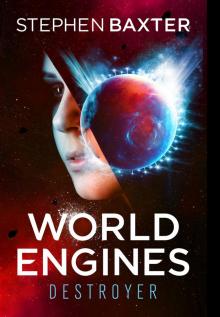 World Engine
World Engine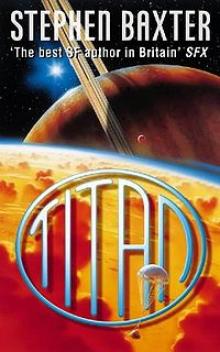 Titan n-2
Titan n-2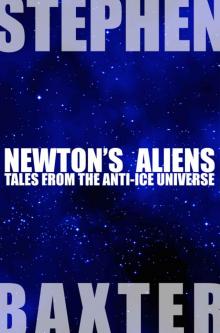 Newton's Aliens: Tales From the Anti-Ice Universe
Newton's Aliens: Tales From the Anti-Ice Universe Exultant
Exultant Manifold: Origin
Manifold: Origin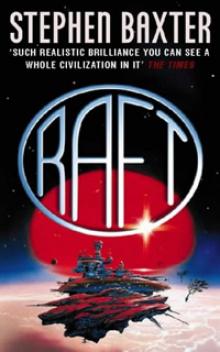 Raft xs-1
Raft xs-1 Bronze Summer n-2
Bronze Summer n-2 Transcendent
Transcendent Stone Spring
Stone Spring Coalescent
Coalescent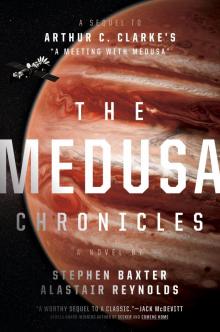 The Medusa Chronicles
The Medusa Chronicles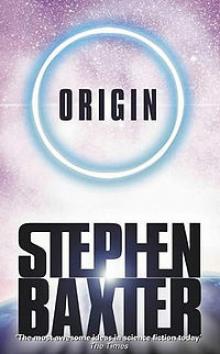 Origin m-3
Origin m-3 Silverhair tm-1
Silverhair tm-1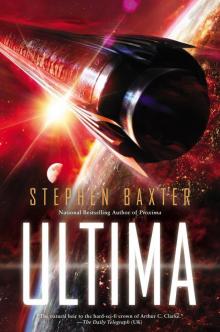 Ultima
Ultima Voyage n-1
Voyage n-1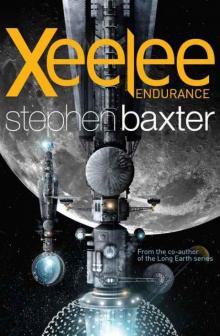 Xeelee: Endurance
Xeelee: Endurance Space m-2
Space m-2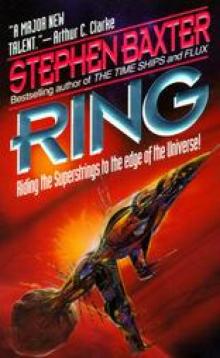 Ring xs-4
Ring xs-4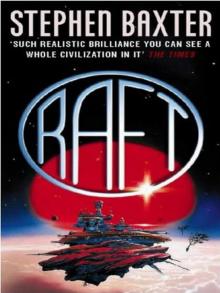 Raft
Raft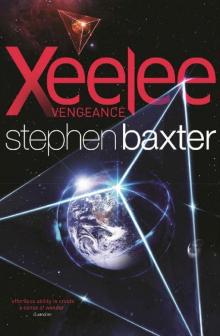 Xeelee: Vengeance
Xeelee: Vengeance Iron Winter n-3
Iron Winter n-3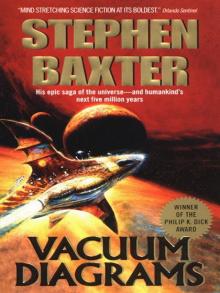 Vacuum Diagrams
Vacuum Diagrams Longtusk tm-2
Longtusk tm-2 Proxima
Proxima Evolution
Evolution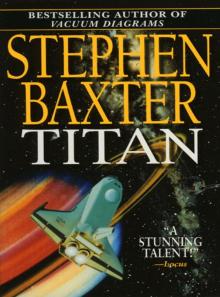 Titan
Titan Last and First Contacts (Imaginings)
Last and First Contacts (Imaginings) Emperor
Emperor The Massacre of Mankind
The Massacre of Mankind Starfall
Starfall Doctor Who - The Wheel of Ice
Doctor Who - The Wheel of Ice Longtusk
Longtusk Silverhair
Silverhair Conqueror tt-2
Conqueror tt-2 Flood
Flood Flood f-1
Flood f-1 Emperor tt-1
Emperor tt-1 Moonseed
Moonseed Conqueror
Conqueror Timelike Infinity xs-2
Timelike Infinity xs-2 The Ghost Pit
The Ghost Pit Xeelee: An Omnibus: Raft, Timelike Infinity, Flux, Ring
Xeelee: An Omnibus: Raft, Timelike Infinity, Flux, Ring Weaver tt-4
Weaver tt-4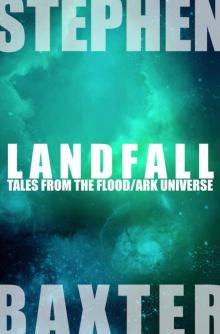 Landfall: Tales From the Flood/Ark Universe
Landfall: Tales From the Flood/Ark Universe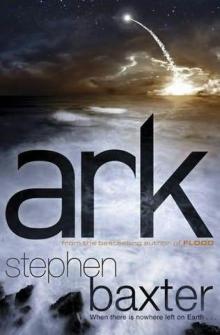 Ark
Ark Emperor: Time’s Tapestry Book One
Emperor: Time’s Tapestry Book One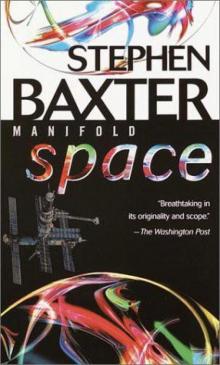 Space
Space Icebones
Icebones Manifold: Space
Manifold: Space Navigator
Navigator Obelisk
Obelisk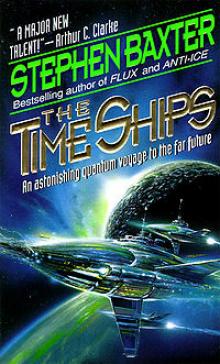 The Time Ships
The Time Ships Bronze Summer
Bronze Summer Resplendent
Resplendent Moonseed n-3
Moonseed n-3 Flux xs-3
Flux xs-3 Transcendent dc-3
Transcendent dc-3 Icebones tm-3
Icebones tm-3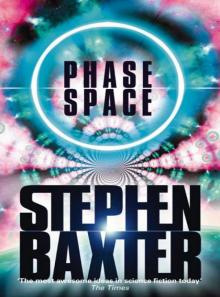 Phase Space
Phase Space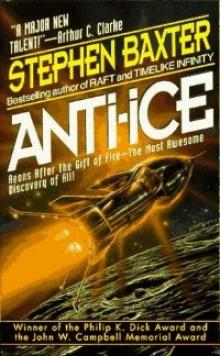 Anti-Ice
Anti-Ice Weaver
Weaver Voyage
Voyage Time m-1
Time m-1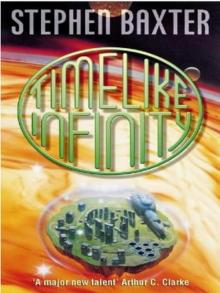 Timelike Infinity
Timelike Infinity Exultant dc-2
Exultant dc-2 Coalescent dc-1
Coalescent dc-1 Navigator tt-3
Navigator tt-3